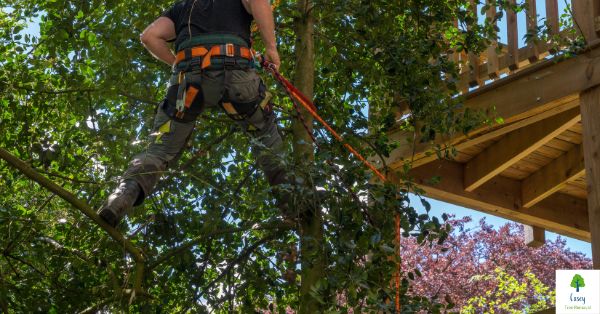Introduction
Tree care is a vital aspect of maintaining a healthy and beautiful landscape. Two common practices used to enhance the health, appearance, and safety of trees are tree trimming and pruning. While the terms are sometimes used interchangeably, they refer to distinct techniques with specific purposes. In this article, we will explore the differences between tree trimming and pruning to help you understand their unique roles in tree maintenance.
Tree Trimming
Tree trimming is a more generalized approach to tree maintenance and primarily involves cutting back overgrown or unruly branches to maintain a tree’s appearance. Here are the key characteristics of tree trimming:
-
Aesthetic Focus: Tree trimming primarily aims to improve the appearance of a tree. It involves removing branches that may be obstructing a view, interfering with structures, or making the tree look unkempt.
-
Light Pruning: Trimming can involve light pruning, such as removing small dead branches or cutting back new growth to maintain a desired shape. However, the removal of larger branches is less common in trimming.
-
Timing: Trimming can be performed at almost any time of the year, as it has a less significant impact on the tree’s overall health.
-
Tools: Common tools used for tree trimming include hand pruners, shears, and pole pruners for branches that are within reach.
-
Aesthetic Benefits: Tree trimming enhances the tree’s appearance and helps it fit well within its surroundings. It can also reduce shading and improve the availability of sunlight to the surrounding landscape.
Pruning
Pruning is a more precise and focused approach to tree care, aimed at promoting the tree’s health and structural integrity. Here are the key characteristics of pruning:
-
Health and Structure Focus: Pruning primarily concentrates on the tree’s health, growth, and structural soundness. It targets the removal of diseased, damaged, or dead branches, as well as those that may pose a hazard.
-
Selective Cutting: Pruning involves selective cutting to eliminate specific branches to improve the tree’s shape, enhance air circulation, and reduce the risk of disease or pests.
-
Timing: Pruning is best performed during the dormant season, typically in late winter or early spring, when the tree is not actively growing. This minimizes stress on the tree and promotes faster healing.
-
Tools: Pruning often requires specialized tools such as hand pruners, loppers, pruning saws, and pole pruners for hard-to-reach branches.
-
Health and Safety Benefits: Pruning supports a tree’s health by removing diseased or damaged branches, promoting new growth, and enhancing structural stability. It also reduces the risk of falling limbs, improving safety.
In Conclusion
Tree trimming and pruning are distinct practices, each with its unique focus and purpose. While both aim to improve the health, appearance, and safety of trees, they are applied differently. Tree trimming is primarily for aesthetic enhancement and can be performed year-round, while pruning is focused on health, structure, and safety and is best done during the dormant season. Knowing the differences between these two practices is essential for ensuring that your trees receive the appropriate care they need to thrive and prosper in your landscape. Consulting with an arborist or tree care professional can help you make informed decisions about when and how to trim or prune your trees.
Casey Tree Removal – All Tree Services including Tree Cutting, Tree mulching, Tree Trimming, Stump Grinding, Tree Pruning, Stump Removal, Emergency Tree Removal Experts In Melbourne!
Click here to read more articles regarding tree removal & related services.
If you are in Mordialloc, Victoria 3195 and looking for Casey Tree Removal, below is the best way to visit us.


Recent Comments